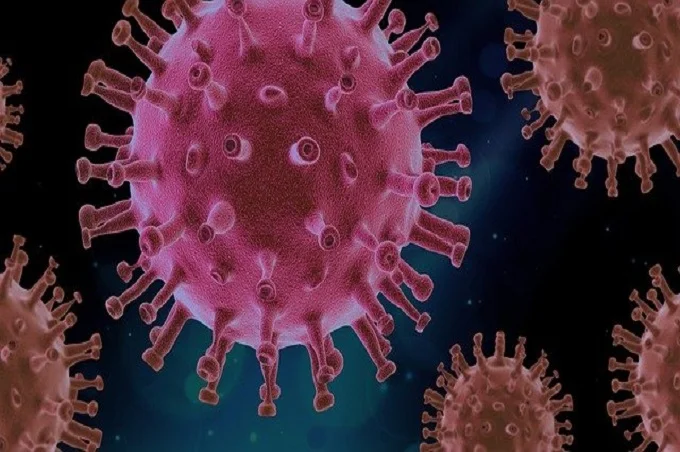Humanity perceives viruses as a purely negative phenomenon. It seems as if they appeared only to harm everyone around and eventually destroy all life. Viruses have indeed brought much suffering to our world, but they have also helped it develop. That’s why viruses are not as bad as they are presented.
1. They have created a complicated life
Scientists believe that the cell nucleus, DNA packed in a protein shell, originated from viruses. This theory is proved by the fact that in some simple organisms like red algae, cell nuclei can move between cells on the same principle as a viral infection.
And although there is not enough evidence yet and discussions are underway on this topic in the scientific world, this hypothesis has a right to exist. After all, a virus that took control of a bacterium without destroying it would surpass the rest of its fellows in terms of survivability.
2. A significant part of our DNA comes from viruses
Scientists believe that 8% of DNA is definitely of viral origin, and another 40 to 50% with a high probability are also the code of viruses. Moreover, most of the remaining DNA also behaves like the virus’s genome, conducting replication in the way inherent in these microorganisms.
So we can say that we, at least in part, have a kind of kinship with viruses. Moreover, these unused sections of DNA, which are currently considered junk, may be revealed in the future to increase the human body’s potential.
3. Viruses are the driving force of evolution
Anyone who is not even familiar with the theory of evolution is aware of natural selection, which can be briefly described by the words “survival of the fittest.” So, the way viruses integrate their DNA and affect living organisms has pushed evolution in the direction it has been moving throughout history, right up to the appearance of human ancestors.
To get the latest stories, install our app here
Viruses destroyed non-viable individuals and left their code in those they could not defeat. With each such embedding of additional code, the surviving individuals became stronger and less susceptible to environmental tests. Viruses have become a kind of orderlies that weeded out weak creatures and allowed the strong to become even stronger.
4. They are candidates for the role of the most effective antibiotic
Less than 100 years ago, before the invention of antibiotics, people with even minor injuries died due to infection of the damaged part. For the fact that people no longer die by stepping on a rusty nail, we should be immensely grateful to Alexander Fleming. He isolated penicillin from mould fungi and created the world’s first antibiotic in 1928.
But a few years before that, Felix D’Herelle proposed using bacteriophages, that is, viruses that destroy bacteria, to treat infections. For example, in 1919, a scientist cured dysentery patients overnight by giving them a solution with viruses that kill the pathogens of this infectious disease.
With the invention of antibiotics, treatment with the help of bacteriophages faded into the background, and after that, it was practically abandoned altogether. However, in today’s conditions, when many antibiotics cease to work due to the development of resistance to viruses due to uncontrolled medication, the treatment of bacterial infections with viruses is again becoming a promising option.
5. It can be used for gene therapy
Even though they are the simplest microorganisms, viruses are fraught with many mysteries that have yet to be solved. So, scientists suggest that viruses can be used in gene therapy to improve human capabilities.
For example, in 2008, therapy was tested in which the genome of viruses was integrated into the eyes of four people with degenerative disease of the visual organs. This experiment gave good results, and the subjects’ eyesight improved. Scientists are also working to turn viruses against other viruses, for example, to treat HIV and AIDS.
6. Viruses will help treat cancer
Cancer is the plague of the 21st century. Just imagine, the population of a small town disappears without a trace in just a year. For a long time, scientists have been looking for a way to overcome this disease, and perhaps they have found one of the options — reoviruses. These are relatively harmless viruses for humans, currently being tested as a kind of booster of anti-cancer drugs.
To get the latest stories, install our app here
The bottom line is that reoviruses infect cancer cells that have a mutated form of Ras family genes. This mutation causes uncontrolled cell growth, which leads to cancer. The same mutation makes such cells vulnerable to reoviruses. Tests show that the reovirus kills these cells and helps anti-cancer drugs work more effectively.
It is also interesting that viruses that increase the risk of developing one type of cancer reduce the likelihood of developing another. For example, Japanese scientists have discovered a virus that in some cases provokes the development of leukaemia, but it also reduces the risk of stomach cancer by a third. If scientists can remove the properties that provoke the occurrence of one cancer and strengthen those that fight other types, it will help to create an effective medicine.
